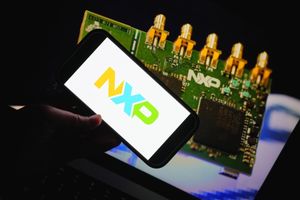NetworkNewsWire Editorial Coverage
New York, NY – October 29, 2025 – The global cancer-therapy landscape is undergoing a rapid evolution toward precision drug-delivery systems designed to boost efficacy, limit toxicity and elevate patient outcomes. Conventional oral and intravenous treatments continue to face significant challenges, chief among them low bioavailability and inadequate tumor targeting. These factors often limit the success of these treatments in clinical settings. Breakthroughs in nanomedicine are now addressing these obstacles, with growing support from the U.S. Food and Drug Administration (FDA), along with other regulators for nanocarrier-based delivery technologies used in advanced therapeutics. This accelerating adoption highlights a broader shift across the industry: a race to optimize how medicines are transported, absorbed, and activated within the human body. Oncotelic Therapeutics Inc. (OTCQB: OTLC) (profile) is at the forefront of this movement with its proprietary Deciparticle(TM) platform, designed to enhance both the bioavailability and therapeutic index of existing oncology drugs. By improving the performance of underutilized compounds, the technology could help redefine standards for cancer treatment. The company’s recent advancement of Sapu-003 into human trials reflects growing traction for this approach, demonstrating how next-generation delivery science can unlock new therapeutic value and reshape the future of oncology innovation. Oncotelic Therapeutics is committed to making a difference in the global oncology space, positioning itself as an innovator along with other companies working to make a difference in cancer treatment, including Iovance Biotherapeutics Inc. (NASDAQ: IOVA), Merck & Co. Inc. (NYSE: MRK), Eli Lilly and Company (NYSE: LLY) and Johnson & Johnson (NYSE: JNJ)
- The pharmaceutical sector is at a critical turning point as it becomes increasingly clear that even the most powerful cancer treatments depend on how effectively they reach tumors in therapeutic concentrations.
- Oncotelic Therapeutics’ proprietary Deciparticle platform directly addresses the need for more effective drug-delivery systems through a modular, ultra-efficient nanomedicine architecture.
- Sapu-003, or injectible Deciparticle Everolimus (Afinitor), has entered first-in-human clinical trials in Australia, marking a key milestone for the platform’s external validation.
- Forecasts projecting thenanomedicine market to surpass $500 billion by 2032 highlight a sector driven more by delivery innovation than by new molecule creation.
- Oncotelic’s broader mission is to help makehigh-bioavailability nanomedicine the standard rather than the exception across oncology and rare-disease indications.
Click here to view the custom infographic of the Oncotelic Therapeutics editorial.
Advanced Drug Delivery Becoming Top Priority
The pharmaceutical sector is at a critical turning point as it becomes increasingly clear that even the most powerful cancer treatments depend on how effectively they reach tumors in therapeutic concentrations. Many promising oncology drugs underperform not because of inadequate mechanisms of action but because only a small percentage of the administered dose is absorbed and delivered to its target.
Traditional oral and intravenous approaches often suffer from poor solubility, rapid metabolism and uneven distribution within the body, forcing higher dosages and exposing patients to unnecessary toxicity. This challenge is especially evident with mTOR inhibitors, kinase inhibitors and vascular-disrupting agents, where dose-limiting toxicity can halt development despite strong preclinical results.
In response, the focus across the global oncology space has expanded from discovering new drugs to perfecting how those drugs are delivered. Nanomedicine, the science of engineering sub-200-nanometer carriers, is emerging as a leading method for overcoming absorption barriers and minimizing off-target effects. These nanoscale systems not only protect compounds from early breakdown but can also release them in a controlled manner, directing drugs more precisely to cancerous tissue. Market analysts project that the nanomedicine sector could exceed $500 billion by 2032, with oncology driving much of that growth through breakthroughs that substantially improve drug absorption and targeting.
In oncology specifically, nanocarrier-based delivery has gained momentum following key regulatory milestones such as FDA approvals of nanoparticle chemotherapies and RNA-based treatments. These technologies are not minor enhancements. Rather, they can transform underperforming compounds into highly effective therapeutic candidates. As precision medicine evolves beyond genetic targeting toward delivery optimization, companies with superior bioavailability platforms are poised to reshape the competitive landscape.
Turning Bioavailability into Therapeutic Breakthroughs
Oncotelic Therapeutics’ proprietary Deciparticle platform directly addresses the need for more effective drug-delivery systems through a modular, ultra-efficient nanomedicine architecture. In preclinical models, the delivery engine has been shown to raise drug bioavailability from conventional levels of 10–20% to as high as 80–100%. Instead of designing entirely new molecules, Deciparticle re-engineers how existing and emerging drugs are transported through the body, enhancing performance without altering their chemical structure.
This improved delivery capability offers several critical advantages: lower dosing requirements, reduced systemic toxicity and a higher therapeutic index. A treatment that once required heavy dosing to achieve meaningful exposure can, when reformulated within a precision nanocarrier, achieve greater efficacy at a fraction of the dose. This not only improves safety but also compresses clinical development timelines, helping oncology programs progress more efficiently from lab to patient.
The Deciparticle platform is intentionally versatile. Because it relies on physical precision rather than disease-specific molecular binding, it can be applied across a wide range of drug categories from mTOR inhibitors, small-molecule anti-angiogenics and antineoplastics to rare-disease therapeutics. Oncotelic views this system as a scalable technological framework rather than a single formulation, giving it multi-asset potential across a diverse therapeutic portfolio.
Clinical Progress Across Multiple Programs
Sapu-003, or injectible Deciparticle Everolimus (Afinitor), has entered first-in-human clinical trials in Australia, marking a key milestone for the platform’s external validation. The trial, announced by Sapu Nano, a joint initiative of Oncotelic, demonstrates that the platform has successfully met preclinical safety and manufacturing standards to proceed into regulated testing.
Sapu-003 utilizes Everolimus, marketed as Afinitor(R), a well-established but absorption-limited mTOR inhibitor, taken orally, used across multiple cancer indications. In its traditional form, much of the compound is lost to liver metabolism and variable pharmacokinetics, requiring careful monitoring and reducing its full therapeutic potential. By contrast, the Deciparticle injectible version is designed to deliver near-complete drug availability directly to the intended site of action, potentially amplifying efficacy and clinical outcomes.
The validity of the platform was further illustrated with the company’s announcement that three abstracts featuring Sapu-003, or intravenous Deciparticle Everlimus (Afinitor) have been accepted for presentation at the 2025 San Antonio Breast Cancer Symposium (SABCS), scheduled for December 9–12, 2025. “These three accepted abstracts underscore the breadth and innovation of our Deciparticle nanomedicine platform,” said Sapu Nano CEO Dr. Vuong Trieu. “Sapu003 represents the first intravenous everolimus formulation with the potential to deliver robust mTOR inhibition and direct tumor cytotoxicity. We are honored to share these findings with the global oncology community at SABCS.”
Beyond Sapu-003, Oncotelic is developing additional oncology candidates within the same delivery system. These include chemotherapies and targeted agents that have shown biological activity but remain hindered by absorption and toxicity issues. Each new asset integrated into the Deciparticle system strengthens Oncotelic’s position as a multiprogram nanomedicine innovator, moving beyond the one-drug biotech model.
Expanding Market and Value Creation
Forecasts projecting the nanomedicine market to surpass $500 billion by 2032 highlight a sector driven more by delivery innovation than by new molecule creation. Within that growth, oncology is expected to lead, propelled by the need for targeted, low-toxicity, high-response-rate treatments. This trajectory directly supports Oncotelic’s focus on maximizing the performance of proven therapies rather than replacing them.
By substantially improving the bioavailability of approved and commercialized drugs, the company shortens development timelines, mitigates early-stage risk through known safety profiles and releases untapped value by realizing a compound’s full therapeutic potential. In today’s capital-conscious biotech environment, such efficiency is appealing. Investors increasingly favor platform-based models that can be reused across multiple programs rather than single-asset ventures with binary outcomes.
This approach offers a dual-path value opportunity. Near-term catalysts are tied to clinical results and partnerships from Sapu-003 and subsequent candidates, while longer-term scalability comes as Deciparticle becomes an enabling platform for other pharmaceutical companies seeking improved formulations for absorption-limited drugs.
Enhancing Patient Outcomes Through Precision Delivery
For patients, the advantages of this delivery paradigm extend far beyond technical performance metrics. Treatments enhanced through Deciparticle technology could provide superior therapeutic benefit with less toxicity, mitigating the dose-related side effects that often diminish quality of life during cancer therapy. Drugs once sidelined for being too toxic or inconsistent may find renewed clinical potential when re-engineered through this approach.
Oncotelic’s broader mission is to help make high-bioavailability nanomedicine the standard rather than the exception across oncology and rare-disease indications. Achieving this would not only improve existing treatments but could also transform them into reliably controllable, or even curative, therapies. In an era where delivery science is emerging as the next major frontier in cancer innovation, the Deciparticle platform positions Oncotelic to compete and collaborate at the forefront of that transformation.
Global Momentum Accelerates in Next-Generation Cancer Therapies
Across the oncology landscape, a new wave of breakthroughs is reshaping how cancer is treated, managed and ultimately overcome. Researchers and biopharmaceutical innovators are achieving meaningful progress across immunotherapy, targeted biologics and combination regimens—fields once considered the frontier of cancer medicine.
Iovance Biotherapeutics Inc. announced that Health Canada has issued a Notice of Compliance with Conditions for Amtagvi(R) (lifileucel), a tumor-derived autologous T cell immunotherapy. Amtagvi is indicated for the treatment of adult patients with unresectable or metastatic melanoma that has progressed on or after at least one prior systemic therapy including a PD-1 blocking antibody, and if BRAF V600 mutation positive, a BRAF inhibitor with or without a MEK inhibitor, and who have no satisfactory alternative treatment options.
Merck & Co. Inc. has reported that the FDA has granted priority review for two supplemental Biologics License Applications for KEYTRUDA(R) (pembrolizumab) and KEYTRUDA QLEX(TM) (pembrolizumab and berahyaluronidase alfa-pmph). Each application is in combination with Padcev(R)(enfortumab vedotin-ejfv) for the treatment of patients with muscle-invasive bladder cancer who are ineligible for cisplatin-based chemotherapy. The FDA set a Prescription Drug User Fee Act, or target action, date of April 7, 2026, marking the first concurrent review of both KEYTRUDA and KEYTRUDA QLEX for the same novel indication.
Eli Lilly and Company is sharing results from the primary overall survival analysis of its phase 3 monarchE trial. Results indicate that two years of adjuvant Verzenio plus endocrine therapy (ET) reduced the risk of death by 15.8% versus ET alone and resulted in sustained long-term improvements in invasive disease-free survival and distant relapse-free survival, in patients with hormone receptor-positive, human epidermal growth factor receptor 2-negative, node-positive, high-risk early breast cancer. The results were published in the “Annals of Oncology” and are being submitted to regulatory health authorities globally.
Johnson & Johnson released new data from the primary analysis of the ongoing phase 2b SunRISe-4 study. According to the company, the data demonstrated that treatment with INLEXZO(TM) (gemcitabine intravesical system) plus intravenous cetrelimab before radical cystectomy resulted in a clinically meaningful rate of pathologic complete response and pathologic overall response in patients with muscle invasive bladder cancer (MIBC) who are ineligible for or refuse neoadjuvant platinum-based chemotherapy and are scheduled for bladder removal. The data was featured as an oral presentation at the European Society of Medical Oncology (ESMO) 2025 Congress.
As the oncology field enters this next phase of evolution, the convergence of science, technology and precision delivery is setting new standards for efficacy and safety while redefining what success looks like in cancer treatment. These milestones, emerging across diverse therapeutic classes, illustrate a clear trajectory: The era of smarter, more targeted oncology is no longer on the horizon, it is already taking shape in clinics and trials worldwide.
For more information, visit Oncotelic Therapeutics Inc.
About NetworkNewsWire
NetworkNewsWire (“NNW”) is a specialized communications platform with a focus on financial news and content distribution for private and public companies and the investment community. It is one of 70+ brands within the Dynamic Brand Portfolio @ IBN that delivers: (1) access to a vast network of wire solutions via InvestorWire to efficiently and effectively reach a myriad of target markets, demographics and diverse industries; (2) article and editorial syndication to 5,000+ outlets; (3) enhanced press release enhancement to ensure maximum impact; (4) social media distribution via IBN to millions of social media followers; and (5) a full array of tailored corporate communications solutions. With broad reach and a seasoned team of contributing journalists and writers, NNW is uniquely positioned to best serve private and public companies that want to reach a wide audience of investors, influencers, consumers, journalists and the general public. By cutting through the overload of information in today’s market, NNW brings its clients unparalleled recognition and brand awareness.
NNW is where breaking news, insightful content and actionable information converge.
For more information, please visit www.NetworkNewsWire.com
Please view full terms of use and disclaimers on the NNW website applicable to all content provided by NNW, wherever published or re-published: http://www.nnw.fm/Disclaimer
NetworkNewsWire is powered by IBN
DISCLAIMER: NetworkNewsWire (NNW) is the source of the Article and content set forth above. References to any issuer other than the profiled issuer are intended solely to identify industry participants and do not constitute an endorsement of any issuer and do not constitute a comparison to the profiled issuer. The commentary, views and opinions expressed in this release by NNW are solely those of NNW. Readers of this Article and content agree that they cannot and will not seek to hold liable NNW for any investment decisions by their readers or subscribers. NNW is a news dissemination and financial marketing solutions provider and are NOT registered broker-dealers/analysts/investment advisers, hold no investment licenses and may NOT sell, offer to sell or offer to buy any security.
The Article and content related to the profiled company represent the personal and subjective views of the Author, and are subject to change at any time without notice. The information provided in the Article and the content has been obtained from sources which the Author believes to be reliable. However, the Author has not independently verified or otherwise investigated all such information. None of the Author, NNW, or any of their respective affiliates, guarantee the accuracy or completeness of any such information. This Article and content are not, and should not be regarded as investment advice or as a recommendation regarding any particular security or course of action; readers are strongly urged to speak with their own investment advisor and review all of the profiled issuer’s filings made with the Securities and Exchange Commission before making any investment decisions and should understand the risks associated with an investment in the profiled issuer’s securities, including, but not limited to, the complete loss of your investment.
NNW HOLDS NO SHARES OF ANY COMPANY NAMED IN THIS RELEASE.
This release contains “forward-looking statements” within the meaning of Section 27A of the Securities Act of 1933, as amended, and Section 21E the Securities Exchange Act of 1934, as amended and such forward-looking statements are made pursuant to the safe harbor provisions of the Private Securities Litigation Reform Act of 1995. “Forward-looking statements” describe future expectations, plans, results, or strategies and are generally preceded by words such as “may”, “future”, “plan” or “planned”, “will” or “should”, “expected,” “anticipates”, “draft”, “eventually” or “projected”. You are cautioned that such statements are subject to a multitude of risks and uncertainties that could cause future circumstances, events, or results to differ materially from those projected in the forward-looking statements, including the risks that actual results may differ materially from those projected in the forward-looking statements as a result of various factors, and other risks identified in a company’s annual report on Form 10-K or 10-KSB and other filings made by such company with the Securities and Exchange Commission. You should consider these factors in evaluating the forward-looking statements included herein, and not place undue reliance on such statements. The forward-looking statements in this release are made as of the date hereof and NNW undertakes no obligation to update such statements.
NetworkNewsWire
New York, NY
www.NetworkNewsWire.com
212.418.1217 Office
Editor@NetworkNewsWire.com
Source: NetworkNewsWire
The post Nanomedicine Innovations Transforming Oncology Drug Delivery and Bioavailability appeared first on Financial News Media.






